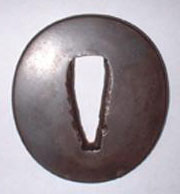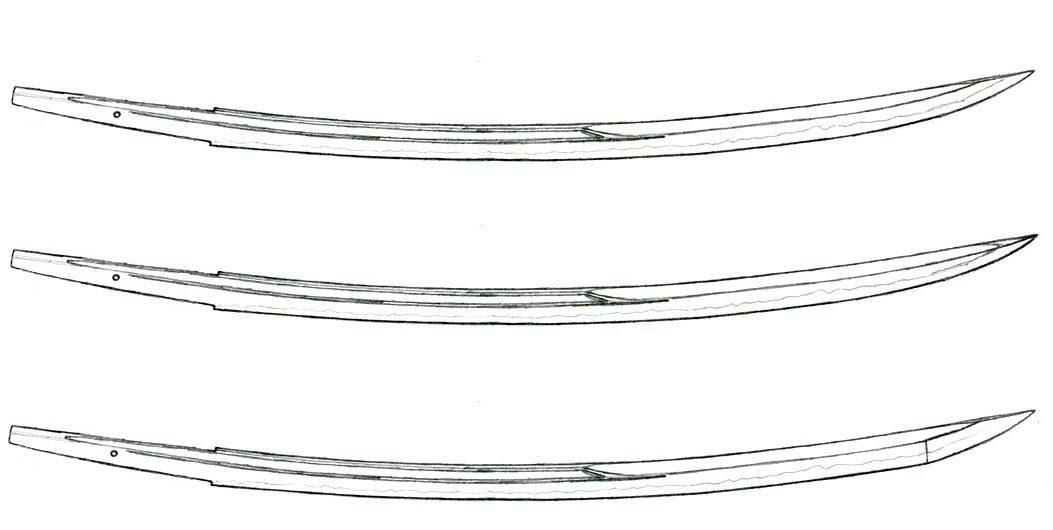Some examples of naginata handle, usually it has a small tsuba.
One more example of naginata-hi, on kikuchi-yari type blade.
Some examples of naginata handle, usually it has a small
tsuba.
Nagunata tsuba

It is a similar size to tanto tsuba, but round and no
kozuka hole.
Naginata-naoshi
NAGINATA was popular in 12th to 14th century. But today original length
long naginata is very rare. Because they were shortened to reshape to katana
or wakizashi in the history. Such a reshaped blade is called "Naginata-naoshi"
that means reshaped from naginata. Mainly they have a shobu-zukuri shape. (an example => wakizashi (Shikkake))



Naginata-naoshi style
On the other hand, we find blades those are originally made in Naginata-naoshi
style from 16th century. They are not Naginata-naoshi in exact meaning,
but Naginata-naoshi style blade. Probably that style was attractive for
peoples eye.
Some examples of Katana in Naginata-naosshi style
